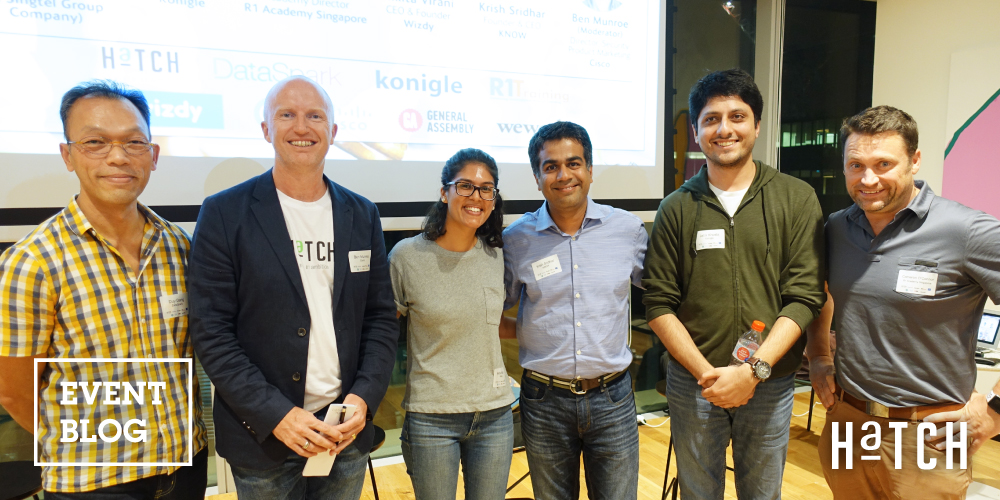Market Insights Report 2025
Explore the latest hiring trends and in-demand skills shaping the employment landscape in 2025 to guide your hiring strategies or job search.

Explore the latest hiring trends and in-demand skills shaping the employment landscape in 2025 to guide your hiring strategies or job search.

Explore the latest hiring trends and in-demand skills shaping the employment landscape in 2025 to guide your hiring strategies or job search.

Explore the latest hiring trends and in-demand skills shaping the employment landscape in 2025 to guide your hiring strategies or job search.



Our panel discussion remains true to the topic and moves in an agile fashion between topics.
It’s hard to believe, but the toughest question on the topic of agile methodology in engineering and beyond came right at the end of the night at the recent HaTCH event. Presented by HaTCH, WeWork and General Assembly, the event was billed: Are you Agile or Fragile? (And we’re not only talking to the Engineers). And the tough question was not a query about how to staff for success in agile or how to tell if your implementation of agile was successful, nor about how to communicate agile development across cultures. It was asked of the expert panel to determine how they would convince an executive that they needed to implement agile; put simply “What’s your elevator pitch for agile?”

The answers varied but seemed to settle on something like: “If you want to get things done - go agile; if you want to transform rather than preserve the status quo, go agile. Given the pressures on most industries to transform customer experience, lower costs, speed time to value, how can you not use agile methods?” In fact there was a lot of agreement on many topics between members of the diverse and varied panel which included an active agile methodology trainer Cameron O’Connor, Director of R1 Academy, Duy Dang, Head of Engineering at DataSpark, a Singtel company, and three startup founders/CEOs: Jatin Khosla (Konigle), Krish Sridar (Know) and Nikita Virani (Wizdy).
Moderated by Ben Munroe, Director of Product Marketing at Cisco Security, the panel began with some opening statements about the panelists' personal experience and response to agile methods and quickly moved to questions from the audience. It was another big crowd, something of an expectation now at a HaTCH event, and a show of hands quickly revealed that in addition to startups, the audience was also made up of a lot of engineers who had a working knowledge of the topic and the questions revolved around specific elements of agile such as how to organize the daily stand up so that it’s 15 minutes not 2 hours, how long a sprint should be, and how to manage a “scrum of scrums”.
The conversation flowed, as did stories and anecdotes from the agile work floor along with analogies and book recommendations. It was a testament to the agile panelists that they could move quickly from talking about whether you are a pig or a chicken, to solving slow elevator issues with mirrors, to how you should eat an elephant (one bite at a time, of course!). During a discussion on whether you could manage an agile team that was also remote, the book “The Year Without Pants,” by Scott Berkun was recommended (and it was decided that a virtual team was more of a reality than ever but very hard to manage in an agile way).
And finally, elevator pitch aside, the lasting conclusion of the evening was that it’s OK to be fragile in your agile. There was a consensus among the panel that agile is easier said than done. It’s OK to make mistakes as you develop, as long as you learn from those mistakes and you are clear about what you are trying to achieve and how the mistakes affect the overall goal.